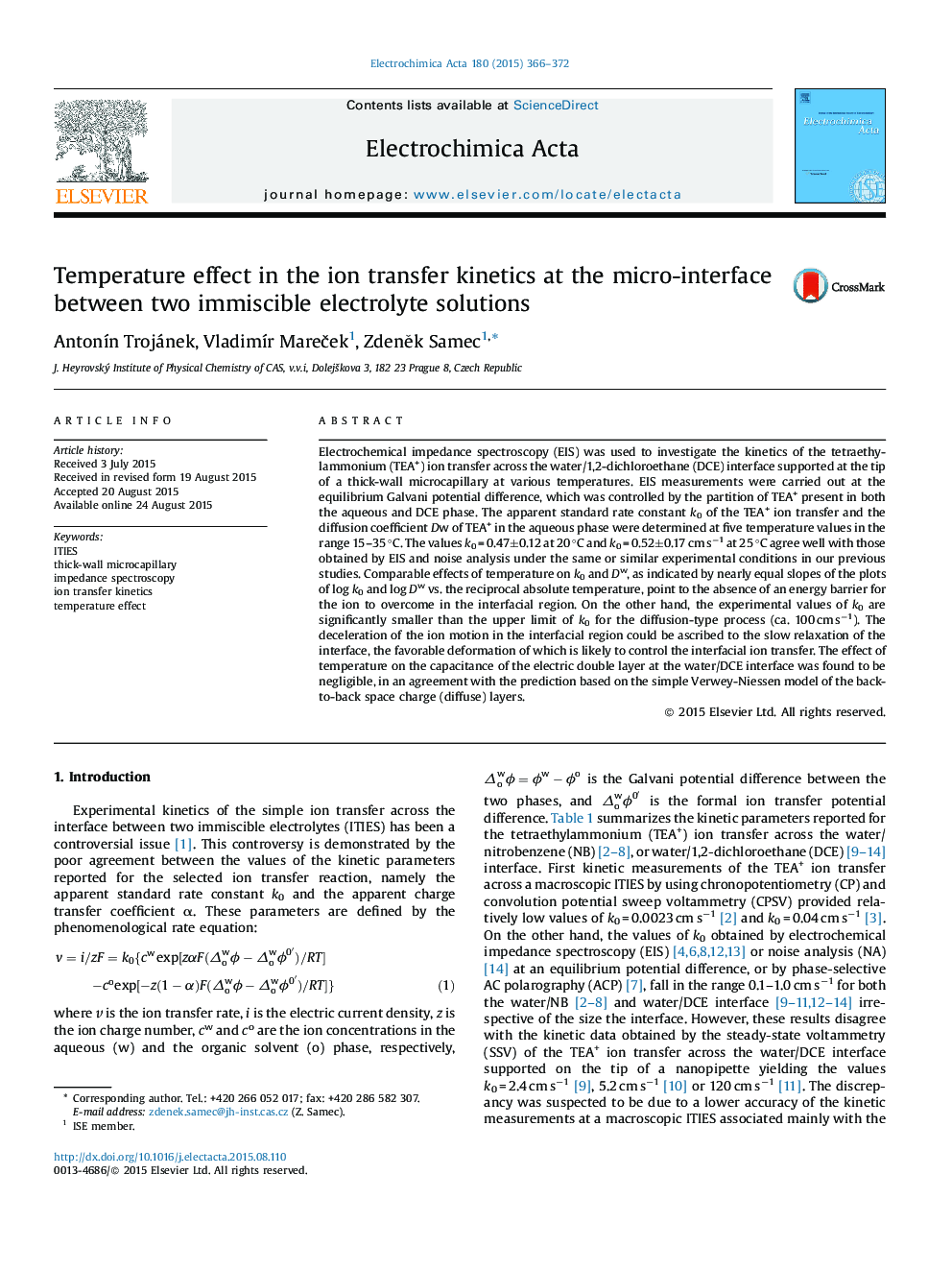| Article ID | Journal | Published Year | Pages | File Type |
|---|---|---|---|---|
| 6610318 | Electrochimica Acta | 2015 | 7 Pages |
Abstract
Electrochemical impedance spectroscopy (EIS) was used to investigate the kinetics of the tetraethylammonium (TEA+) ion transfer across the water/1,2-dichloroethane (DCE) interface supported at the tip of a thick-wall microcapillary at various temperatures. EIS measurements were carried out at the equilibrium Galvani potential difference, which was controlled by the partition of TEA+ present in both the aqueous and DCE phase. The apparent standard rate constant k0 of the TEA+ ion transfer and the diffusion coefficient Dw of TEA+ in the aqueous phase were determined at five temperature values in the range 15-35 °C. The values k0 = 0.47±0.12 at 20 °C and k0 = 0.52±0.17 cm sâ1 at 25 °C agree well with those obtained by EIS and noise analysis under the same or similar experimental conditions in our previous studies. Comparable effects of temperature on k0 and Dw, as indicated by nearly equal slopes of the plots of log k0 and log Dw vs. the reciprocal absolute temperature, point to the absence of an energy barrier for the ion to overcome in the interfacial region. On the other hand, the experimental values of k0 are significantly smaller than the upper limit of k0 for the diffusion-type process (ca. 100 cm sâ1). The deceleration of the ion motion in the interfacial region could be ascribed to the slow relaxation of the interface, the favorable deformation of which is likely to control the interfacial ion transfer. The effect of temperature on the capacitance of the electric double layer at the water/DCE interface was found to be negligible, in an agreement with the prediction based on the simple Verwey-Niessen model of the back-to-back space charge (diffuse) layers.
Related Topics
Physical Sciences and Engineering
Chemical Engineering
Chemical Engineering (General)
Authors
AntonÃn Trojánek, VladimÃr MareÄek, ZdenÄk Samec,
